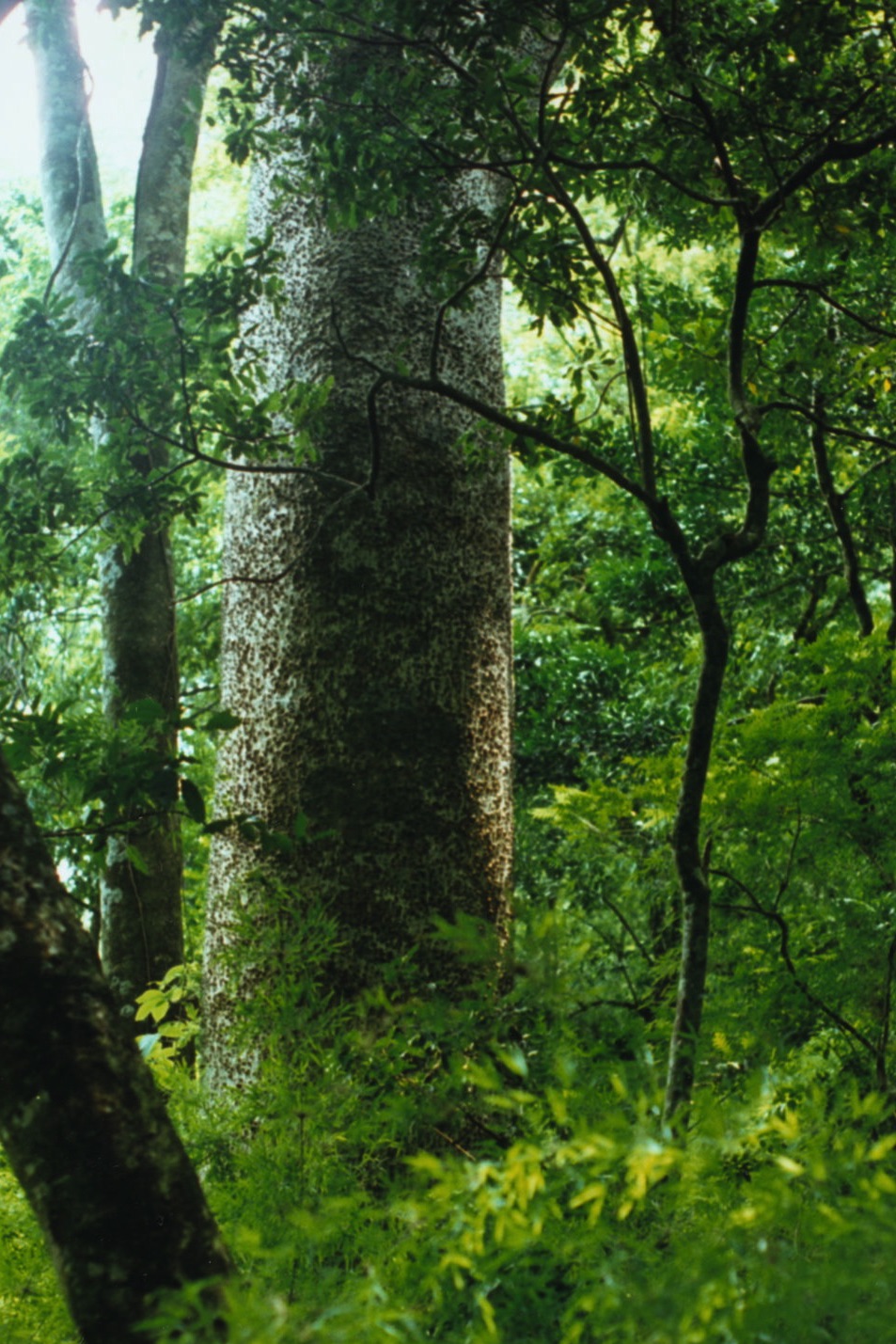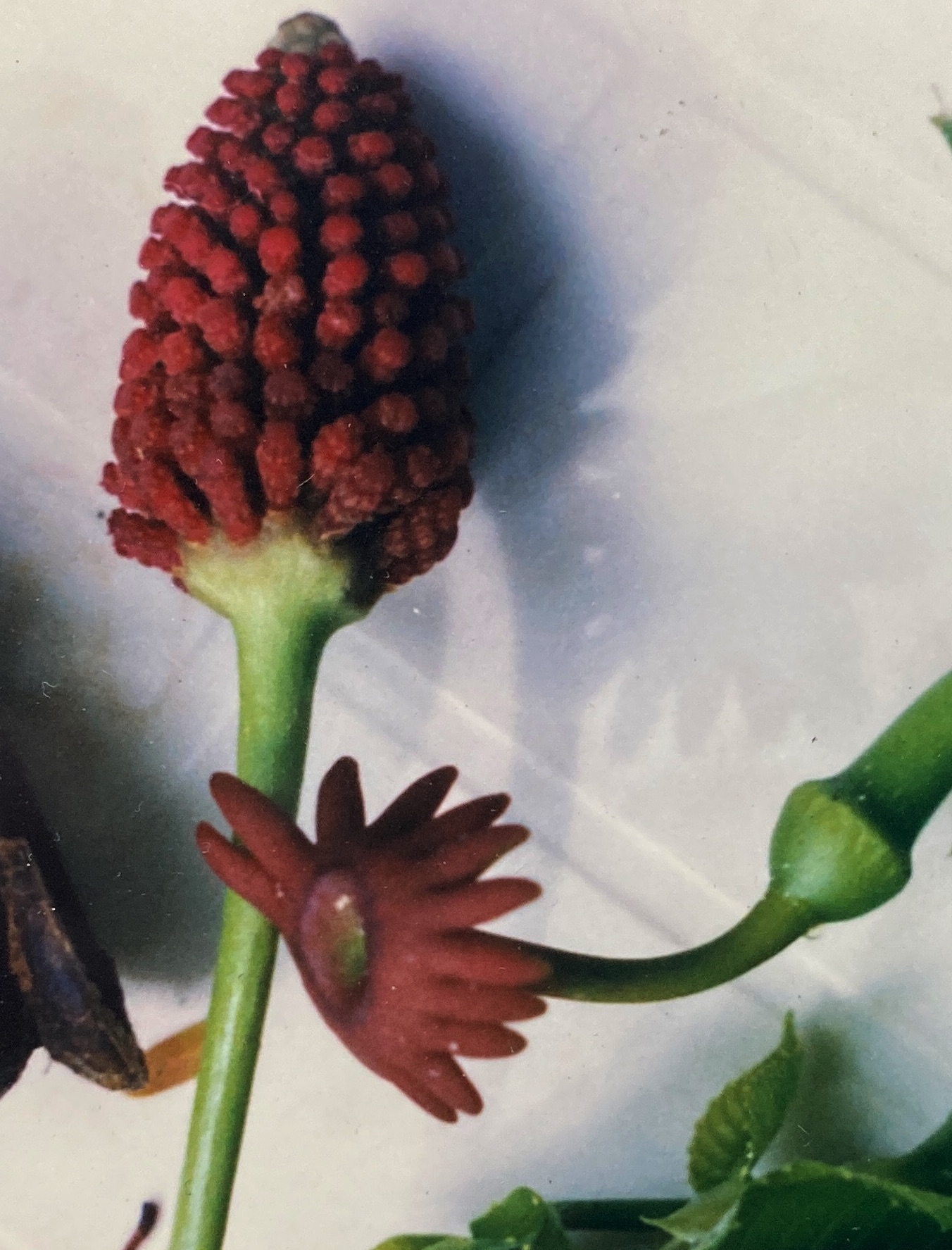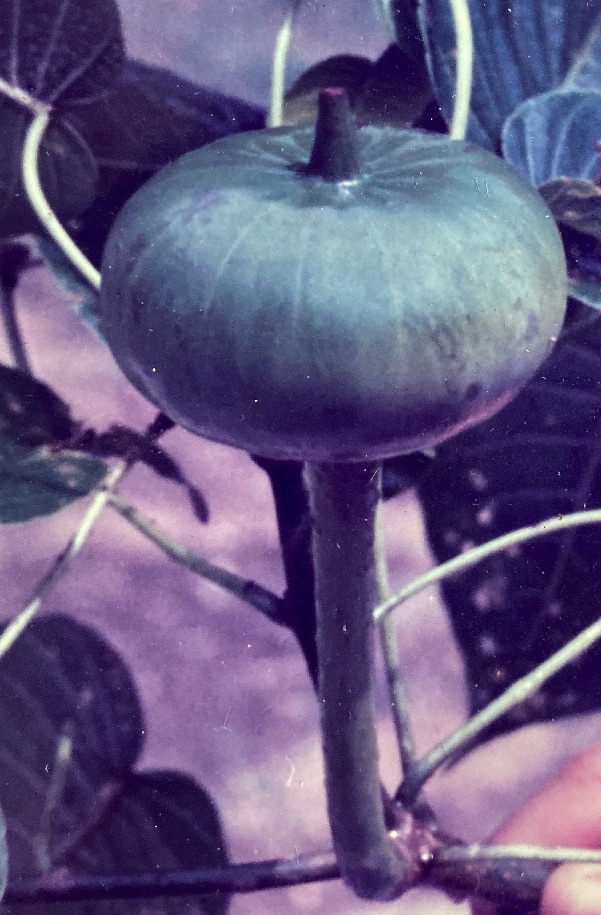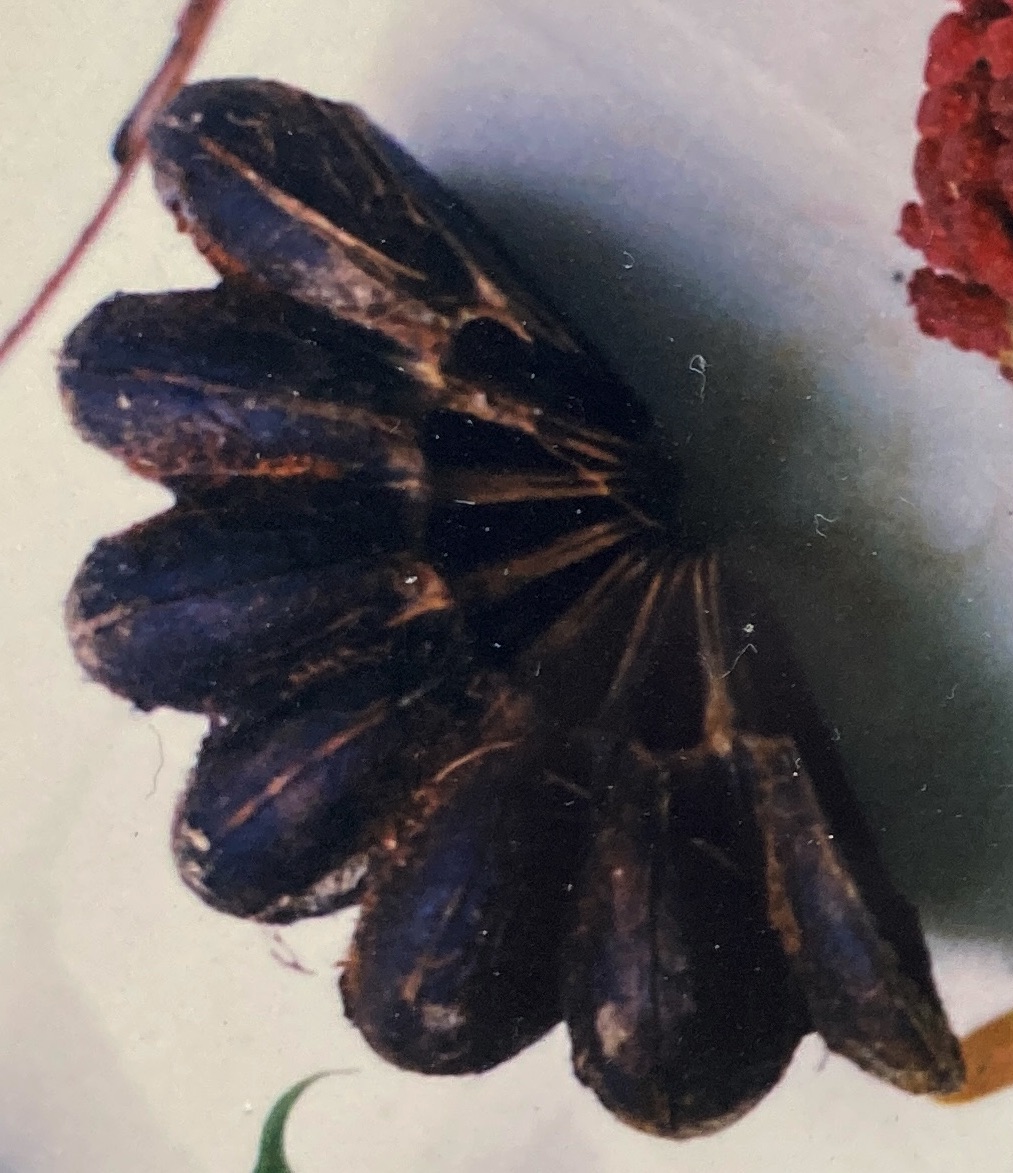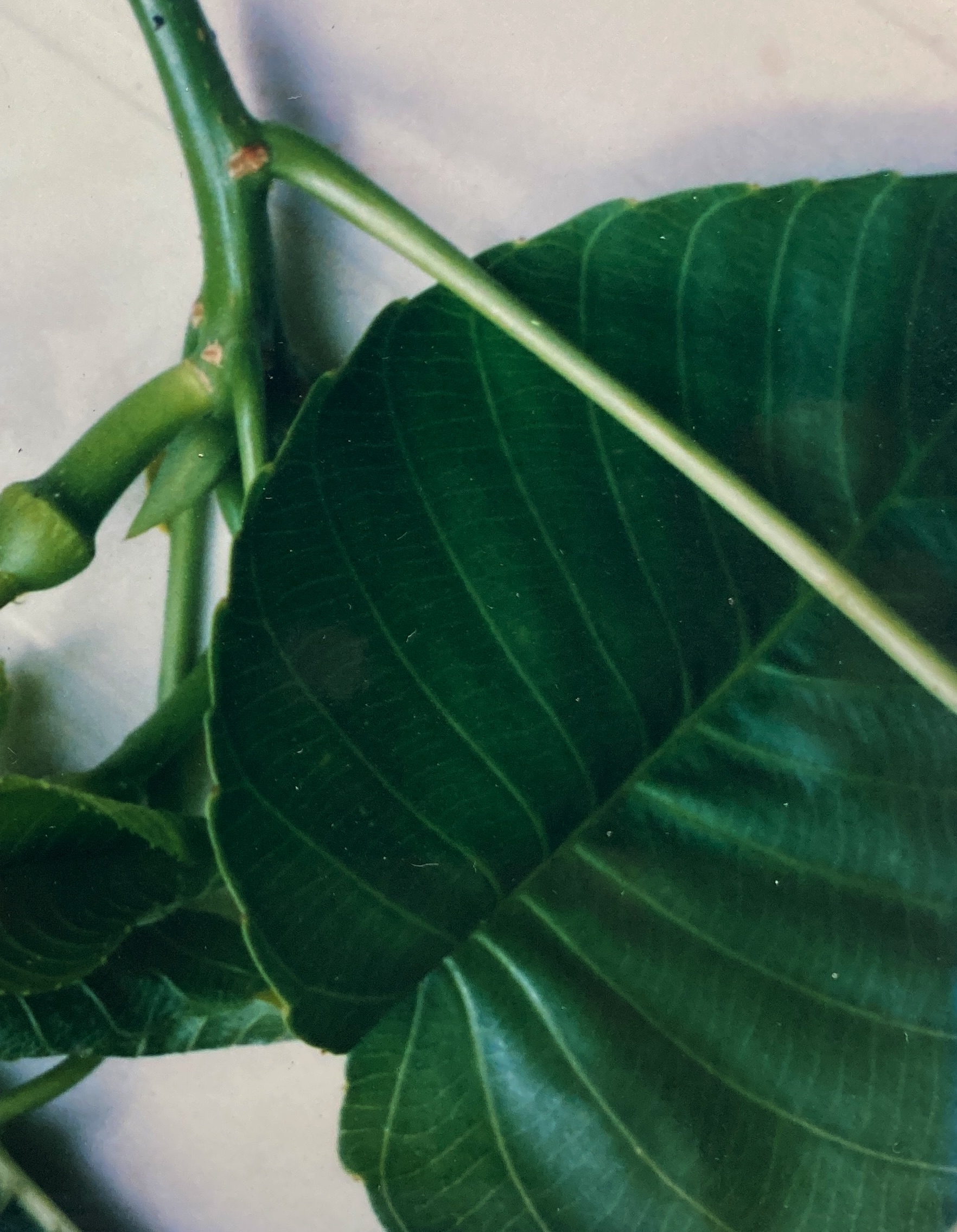Hura crepitans L
Euphorbiaceae
Jabillo, Sandbox Tree
Occasional canopy tree (35m) of immense proportions whose robust, cylindrical and straight bole towers above the forest understory. In addition to stature, Jabillo is noteworthy for its exploding seed pods and toxic white sap, typical of the Euphorb plant family.
Description: Mature Jabillo trees have straight, unbranched, columnar trunks that support broad, umbrella-shaped crowns. The tree sports unusual, pale grey bark that would be smooth if not for the myriad, needle-sharp dark thorns that cover its surface. Jabillo trees stand out in the forest, thanks to the light-colored hue that the bark lends to the trunk, especially when seen from a distance. Bright green and glossy, Jabillo leaves (20cm) are simple and alternate. Each is heart shaped, and held at the end of a long (10cm) petiole. The blades are further adorned by a regular, fish-bone pattern of leaf veins. Jabillo trees are evergreen, retaining a leaf cover all year. When broken, twigs and leaves exude a thick, white toxic sap.
Flowers may appear anytime, but are most abundant during the rainy-season months of June, July, and August. Monoecious, male and female flowers are separate and different, but born on the same tree. Both sexes sport a rich, maroon color. Male blossoms (4m x 2cm) are petal-less, and resemble large, cone-shaped catkins, where the pollen is generated. Each is held at the end of a long-stalked (10cm) calyx. Female flowers are smaller (2cm) and consist of a daisy-shaped maroon apron. A conspicuous swelling near the base of the stalk supporting the female flower represents the flower’s ovary and the future fruit, should it be fertilized and develop successfully.
Jabillo fruits (13cm x 5cm) mature as green, disk-shaped structures with curved edges. Each is held upright, at the end of a long, thin, pointed pedestal. Inside, a series of flat, round, coin-shaped seeds are arranged radially around the disk’s axis, creating a structure much like a torus. Eventually, these pods dessicate and burst open, producing an audible sound not unlike a gunshot and projecting the seeds for meters in all directions. Fruits may open at any time, but particularly during the dry months of the Costa Rican summer season (December through April).
Similar Species: Jabillo’s columnar, light-barked bole, prominent stubby thorns, and heart-shaped leaves are distinctive and identifying. This tree will not be readily confused with other Pacific slope forest species.
Natural History: Jabillo seeds are explosively dispersed. As described above, they are arranged radially around the disk-shaped capsule. Also inside the capsule, and positioned between neighboring seeds, is a woody, semi-circular plate. The entire structure is then encased in a green, fleshy membrane. When mature, the capsules begin to desiccate. As they dry out, the woody plates begin to warp and expand – creating an outward pressure against the now dry membrane. At some point the pressure produced by the warping plates can no longer be contained by the membrane, and the whole structure explodes, sending the seeds flying and creating a loud, explosive sound.
The sharp fat thorns that cover the Jabillo bole (as well at the toxic white sap) are likely adaptations intended to protect the tree’s foliage from arboreal herbivores.
Uses: Immature, hollowed-out Jabillo seed capsules have been filled with sand and employed as ashtrays, hence the tree’s English common name of “Sandbox Tree”. The toxic sap has been added to water in creeks and small streams to stun fish and make them easier to catch.
Distribution: Jabillo trees prefer the drier tropical forest lowlands more common in northwestern Costa Rica. It is here, in parks like Santa Rosa and Palo Verde that Jabillo trees thrive and have grown to immense proportions. The tree ranges from Nicaragua and the Caribbean to Brazil, Peru and Bolivia.
Images: Trunk Trunk2 Tree Leaf Flower Flower2 Fruit Fruit2 Fruit3

